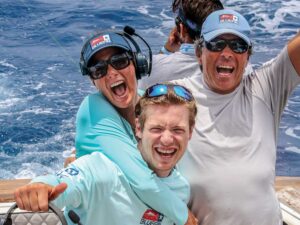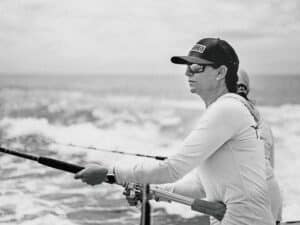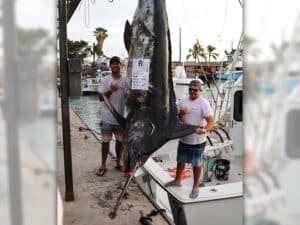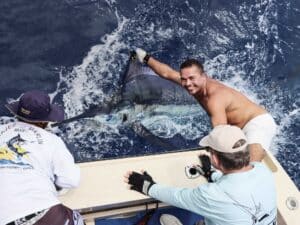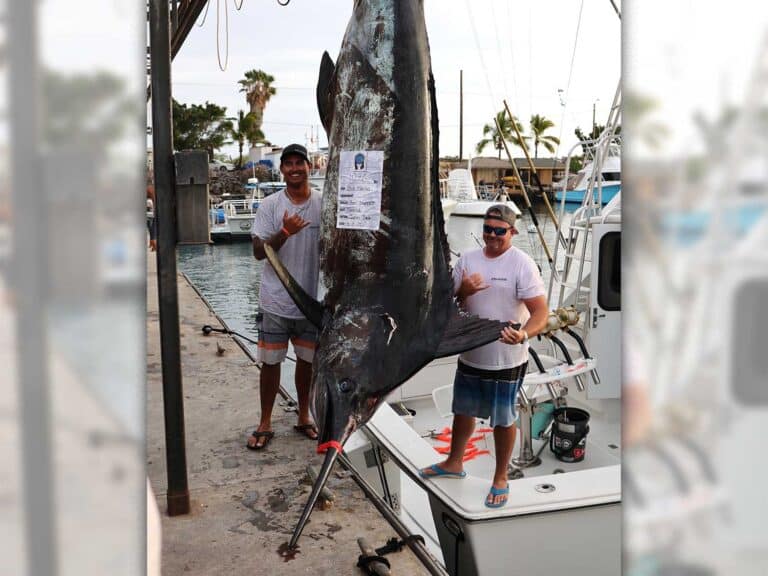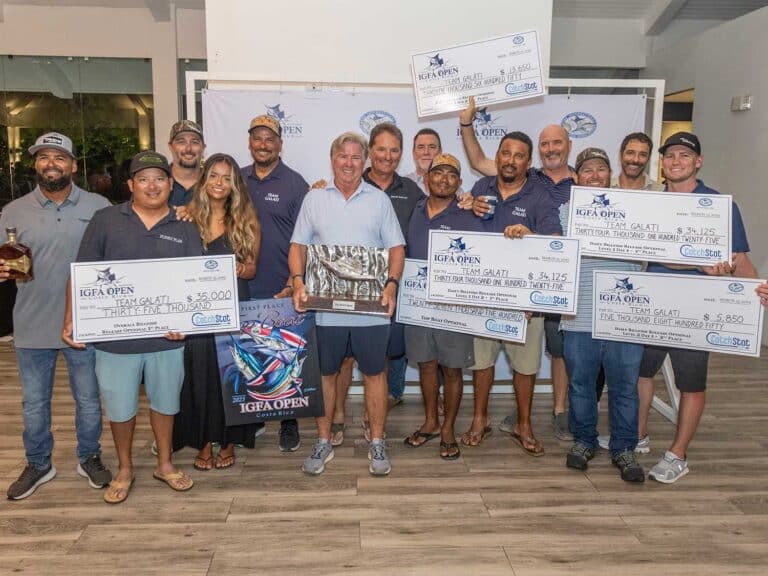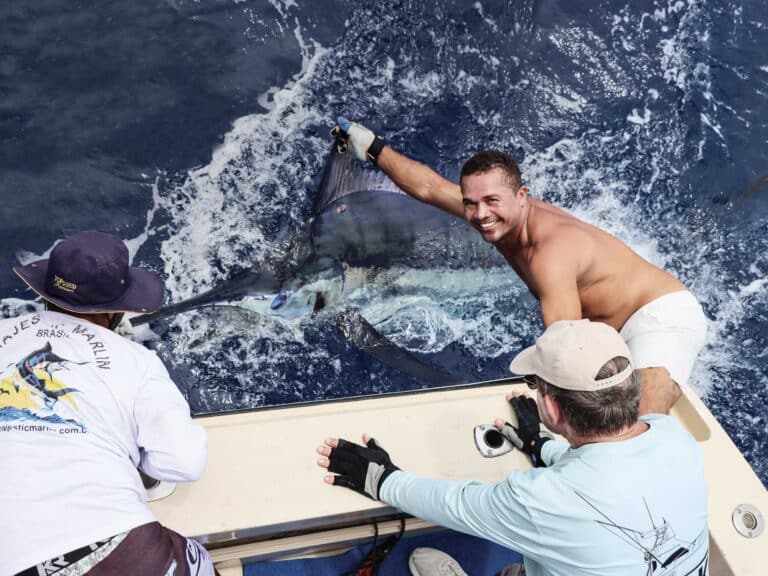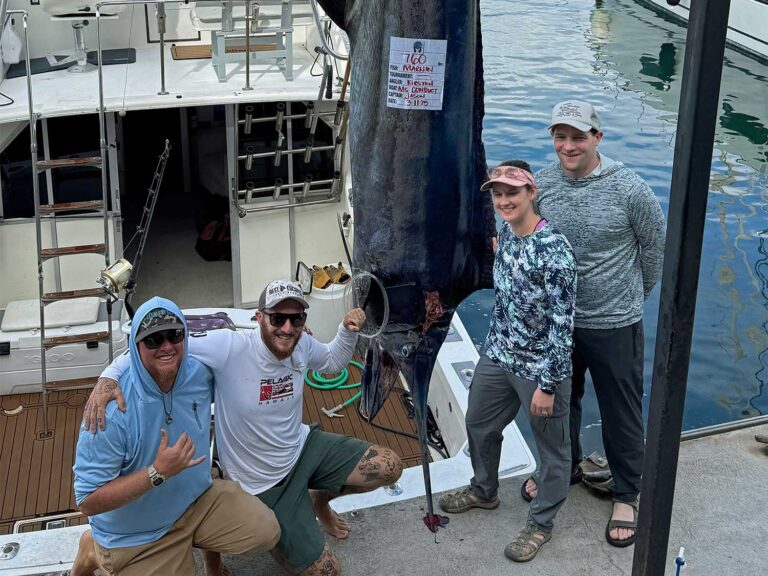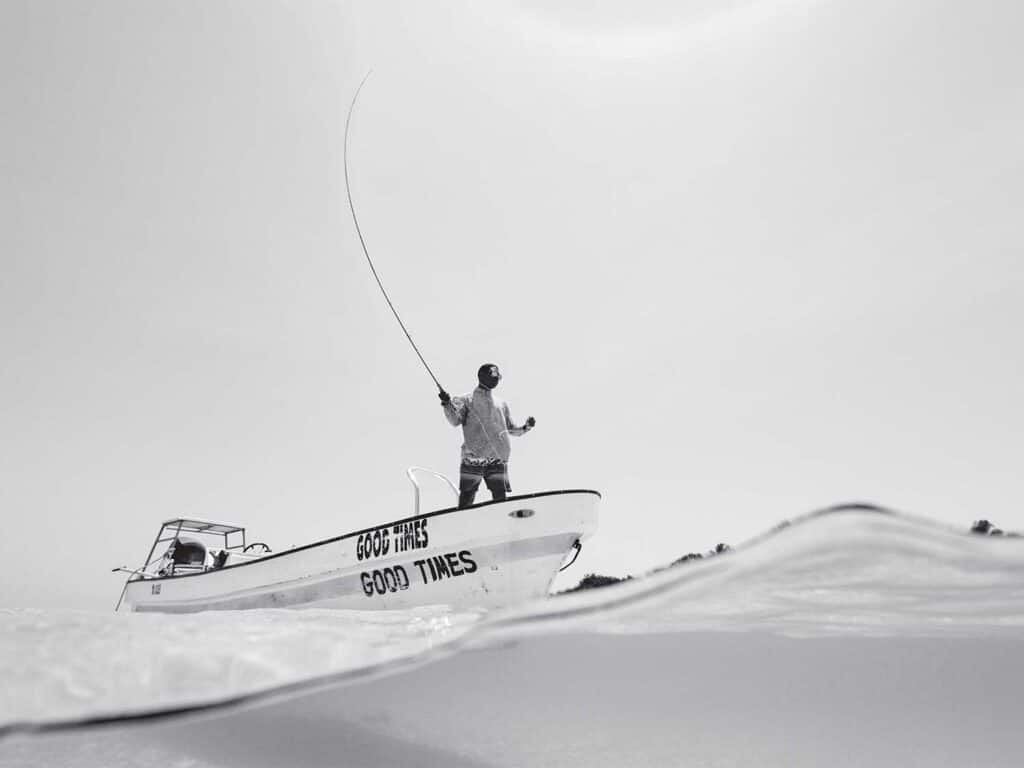
Special delivery: Sign up for the free Marlin email newsletter. Subscribe to Marlin magazine and get a year of highly collectible, keepsake editions – plus access to the digital edition and archives.
The sun crested the horizon and climbed above the stretch of river and thick rainforest below. As howler monkeys and parakeets sounded across the cascading trees, the hillside lit up in a coral glow. Above me, a troop of busy toucans hopped from limb to limb, feeding on berries between beak-to-beak brawls. The Belizean landscape exploded with a kaleidoscope of color and activity as I left the jungle canopy behind to fish the country’s southernmost coast.
Introducing the Jewel
Belize—often called the hidden jewel of the Caribbean—is wedged firmly between Mexico and Guatemala along the eastern coast of Central America. Although it’s relatively small, with a mainland roughly 180 miles long and 68 miles wide, Belize boasts the second-largest barrier reef system in the world, offering divers and anglers access to some of the planet’s most pristine marine ecosystems.
Naturally, Belize is a popular vacation spot for those interested in ecotourism and cultural experiences such as jungle tours, dive and fishing trips, and visits to Mayan ruins. English is the country’s official language, and the exchange rate between Belizean and US dollars is an attractive two to one. It’s understandably a convenient Central American destination for American travelers.
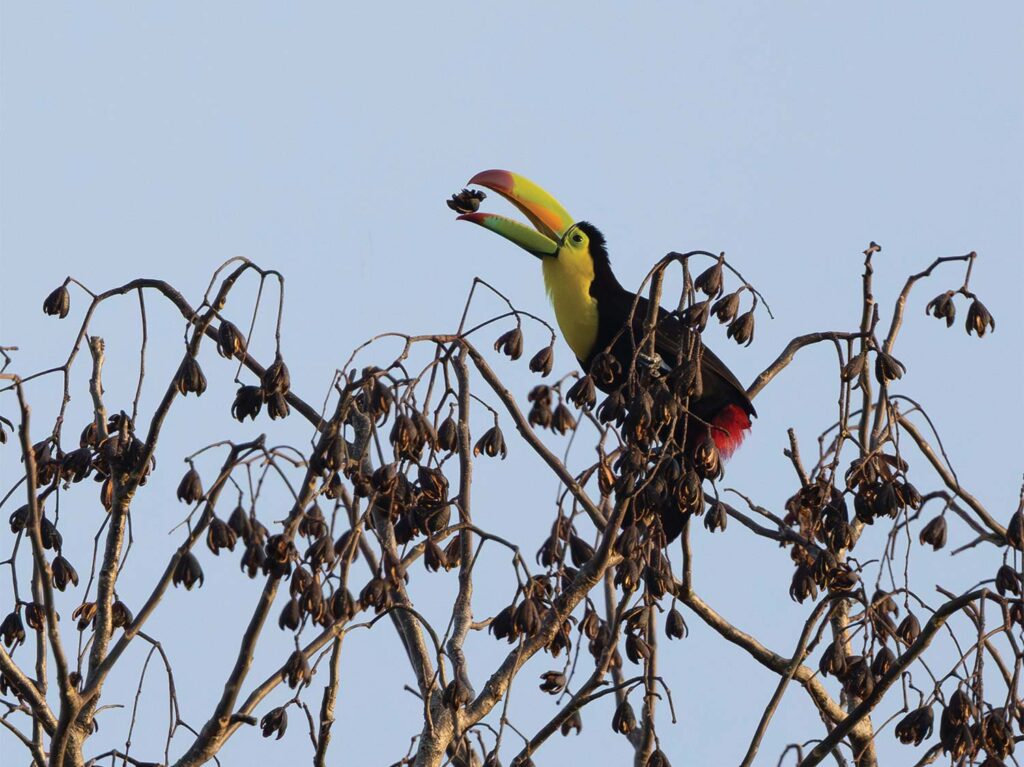
Aside from the influx of visiting tourists, Belize is a cultural melting pot all its own. Its languages, cuisines and festivals showcase the Mayan, Garifuna, Creole, mestizo, East Indian and European peoples living there. I once called Belize home for a very short time in my early 20s, and I distinctly recall marveling then at the number of diverse cultures celebrated as part of the Caribbean nation’s patriotic identity.
Belize’s natural diversity is just as remarkable. Mountain ranges carpeted in thick jungle and meandering rivers give way to stretches of agricultural fields producing sugar cane, cacao, cashews, corn, bananas, oranges and mahogany, the same plants you’ll also find growing in front yards. Along the coast and the cayes, the Earth has tried her hand at every imaginable shade of blue. Crystal clear waters with lively coral reefs are dotted with the reaching red roots of mangrove hammocks or dreamy islands with bright, white sand and shady palms. The country is also home to all manner of wildlife, such as whale sharks, jaguars, tapirs, manatees, sea turtles, hummingbirds, and, importantly for anglers, bonefish, permit, tarpon, snook, dolphin, wahoo, sailfish, blue marlin and reef fishes.
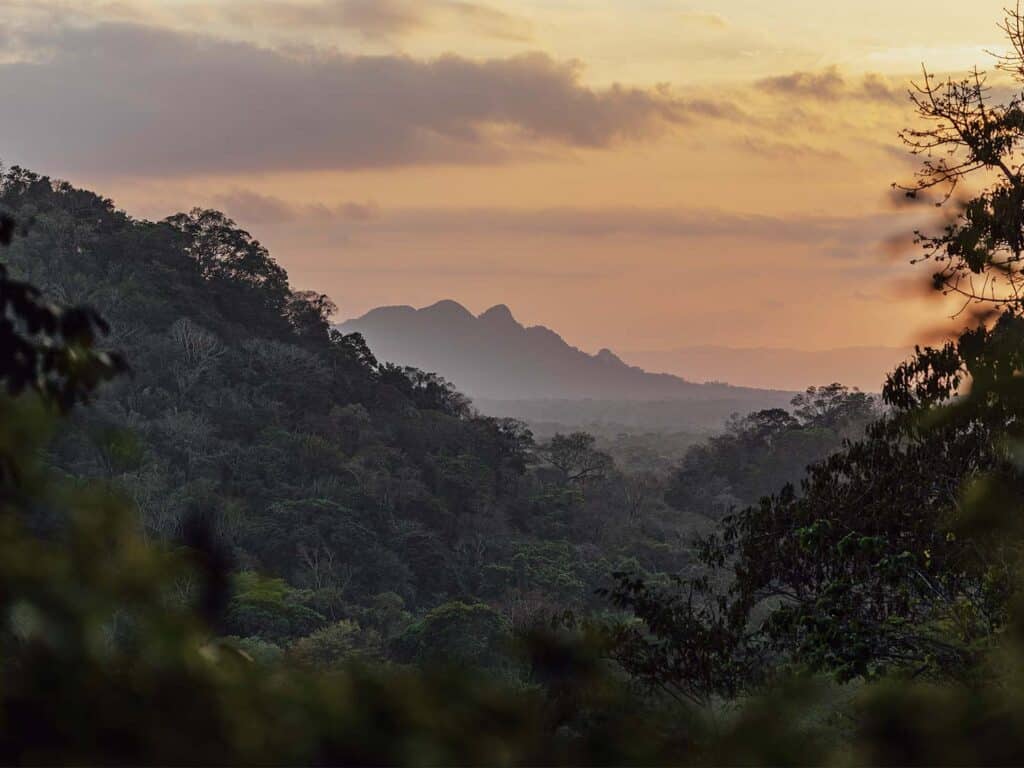
The Pursuit of Permit
Since Belize is a premier destination for an inshore slam on the fly, it only seemed fitting that while in Toledo—the southernmost district of the country—I spend some time pursuing the area’s most prized gamefish: the permit. Easy to spook and difficult to coax, the finicky species draws glutton-for-punishment anglers to Belize’s many lagoons and flats. Copal Tree Lodge—my home base in Toledo’s rainforest—kindly set me up with one of the best fishing operations around.
The tangerine, lavender and teal guest houses at Garbutt’s Fishing Lodge sit at the edge of the sea in the quiet fishing town of Punta Gorda. The four brothers who own and operate the business established it after years of guiding for others. The lodge specializes in permit trips in the nearby Port Honduras Marine Reserve and its maze of mangrove islands.
When I arrived at Garbutt’s, anglers from Ohio, Kentucky, Alaska and Florida were busy chatting with their guides, handing off rigged rods and piling into their assigned pangas. I quickly climbed onto Good Times with 20-year-old guide Kylon Garbutt, a strong and fit young man with a bright smile and a dry sense of humor. Together we set off for the mangrove maze under the golden-hour light of the morning sun.
As we watched a guide and his angler methodically pole along the length of a mangrove hammock, Garbutt calmly announced several tailing permit ahead. The angler on the bow of the boat made careful casts with a crab fly, but the fish weren’t interested. Garbutt shared that this time of year, right after Easter, is often tough. Guides suspect that permit spawn then and therefore aren’t interested in eating. While the fishing proved challenging, the scenery was spectacular.
The other boats pushed farther into the lagoon to spend the afternoon looking for fish, but our time on the water was sadly up. Although Garbutt and I returned to the lodge without a bite to report, I walked away reinvigorated on the beauty of the Belizean landscape and with a refreshed desperation to someday go back and chase those fickle fish.
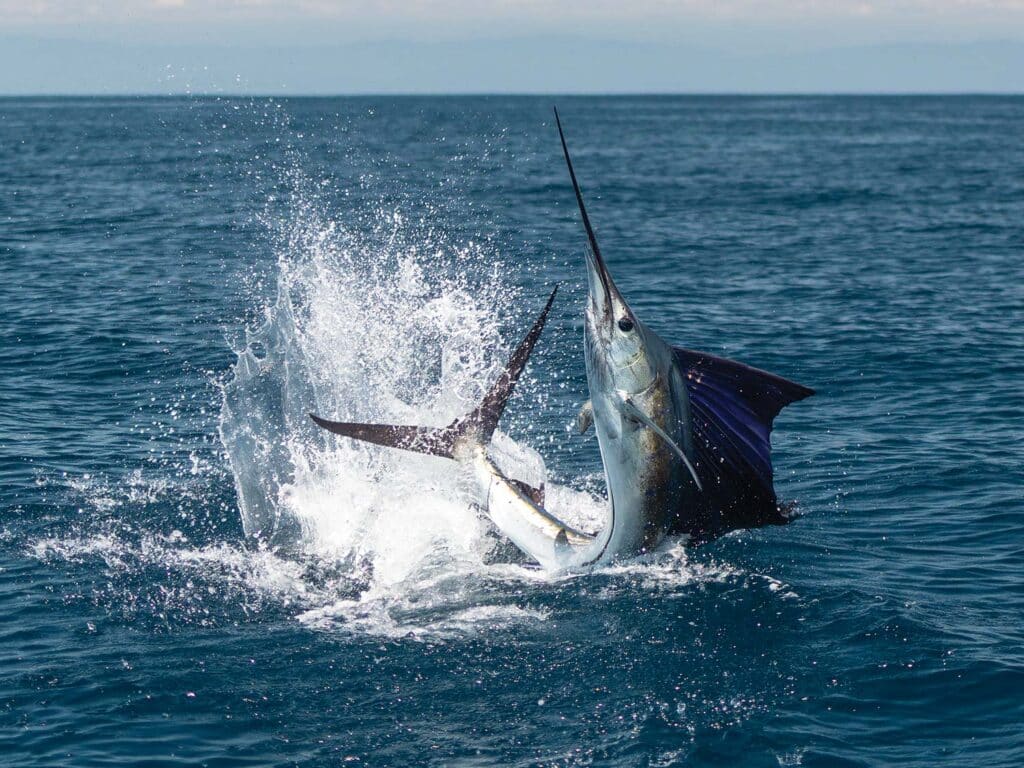
Meeting the Mayans
Belize also offers hiking, rafting and caving adventures farther inland. I ordinarily prefer private experiences, the types of tours that can be self-guided or accommodate one-on-one interaction. That kind of personal and cultural connection was certainly the format for the afternoon I spent at a Mayan family’s home in Santa Cruz Village.
Bruno Kuppinger, a German tour guide who has lived in Belize for the past 27 years, facilitated tours for me and drove me everywhere during my time in the south of the country. Some playfully call him Mr. Toledo, and I can absolutely understand why the name fits. He’s worn many hats in Belize, including farmer, real estate agent, adviser, lodge owner and carpenter.
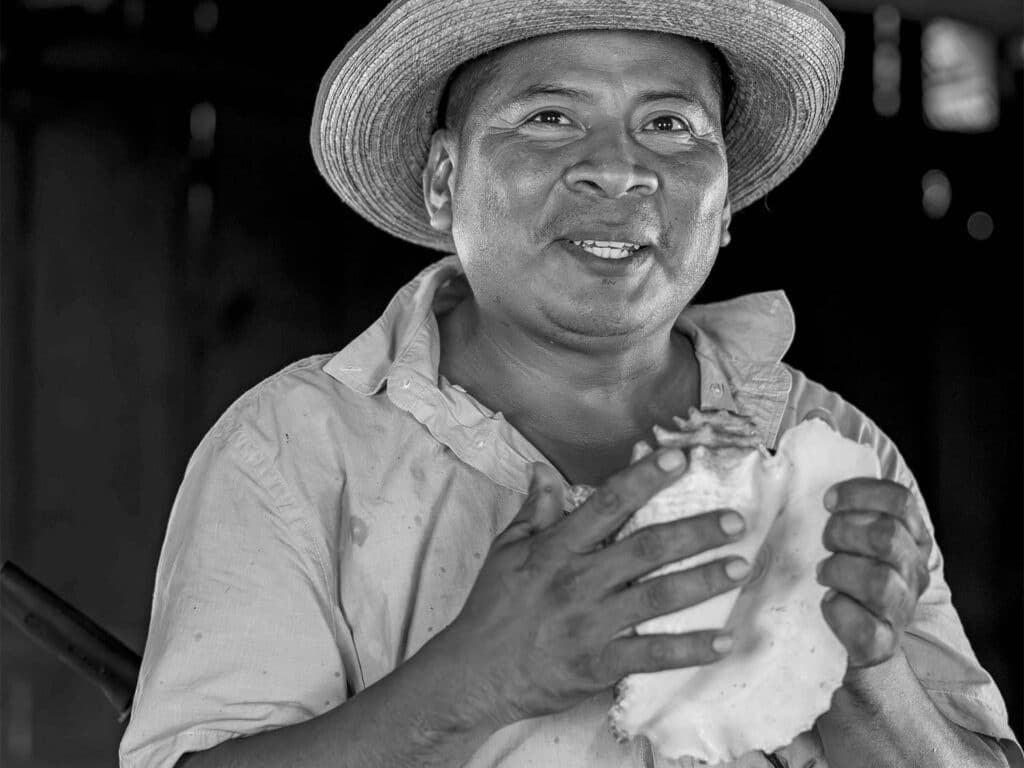
Kuppinger’s passionate about responsible tourism, especially when supporting and respecting indigenous peoples. He works closely with Jose Mes, one of the leaders of the Mopan Maya people living in Santa Cruz, to host small groups at Jose’s home. Surrounded by thousands of acres of jungle, Santa Cruz is still somewhat tucked away from the rush of the outside world. Even so, Mayan communities struggle to balance their hold on tradition while embracing change.
Jose, his wife and their young daughter warmly welcomed me and Kuppinger into their square, hand-hewn home with a thatched roof. As his wife, Hilda, showcases the traditional methods for grinding corn and cacao, Jose offers detailed explanations of how villagers share the land, work in sync with the lunar cycle and make decisions as a community. He also shares the challenges his people endure regarding land rights, commercial markets and protecting their traditional seeds.
I watch as Hilda and her daughter skillfully knead round corn tortillas with their surgical hands. Hilda kindly hands me one so hot off the fire that I have to rotate it through my fingertips in between bites. I’ve eaten countless tortillas, and that one was unequivocally the best I’ve had. The snack was followed by a nice, energizing drink made from freshly ground cacao.
Afterward, I followed Jose outside to learn about the plants surrounding his home and their use in traditional medicines. As we walk the sloping hillside, I’m introduced to a plant that cures diarrhea and another that calms a toothache. We then make our way to a giant pile of cacao that Jose and his family recently harvested.
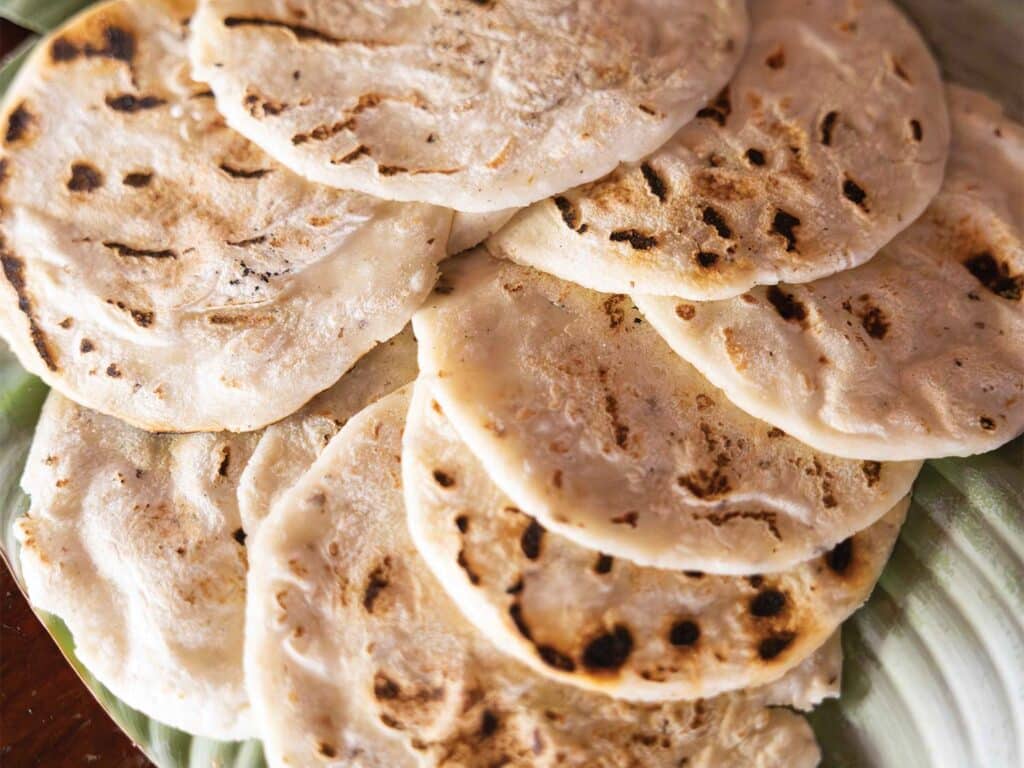
Belize isn’t a large-scale cacao producer compared with competitors; however, the country is known for an exceptional product. The chocolate shops around Belize are great proof of that. With two curious fawn-colored dogs happily at his side, Jose cuts into one of the fruits for me. I grip a slippery, flesh-covered seed and pop it into my mouth, first tasting the sweet and sour fruit and then the deep bitterness of the seed within. Right here, right on this hillside, is where chocolate is born.
I feel lucky to have been invited into the Meses’ home. Tourism without respectful boundaries has been a problem in other Mayan villages, so Jose maintains some exclusivity with the home visits that Kuppinger helps facilitate. In such an intimate setting it’s easy to appreciate and admire the romance of the traditional Mayan approach to land, culture and community. Jose hopes visitors like me will take that message with them.
Farewell Toledo
On my last day in the south, I visited Belize Spice Farm and Botanical Gardens for a wagon tour. The property, which has a restaurant, a store, and soon a pool and cabanas, is a popular destination among tourists looking for a sensory experience. Along the tour I was handed fragrant and delicate flowers and spices—some native to India, the Philippines and Singapore—to smell, touch and taste my way around the world.
I then returned to Copal Tree Lodge for a Copalli rum tasting and to enjoy my last evening on the mountain. The lodge, tucked away amid 16,000 acres of rainforest preserve in the Maya Mountain Range, is quiet and romantic. Amenities include pools, jungle trails, river access and a farm-to-table restaurant using produce grown right on the property.
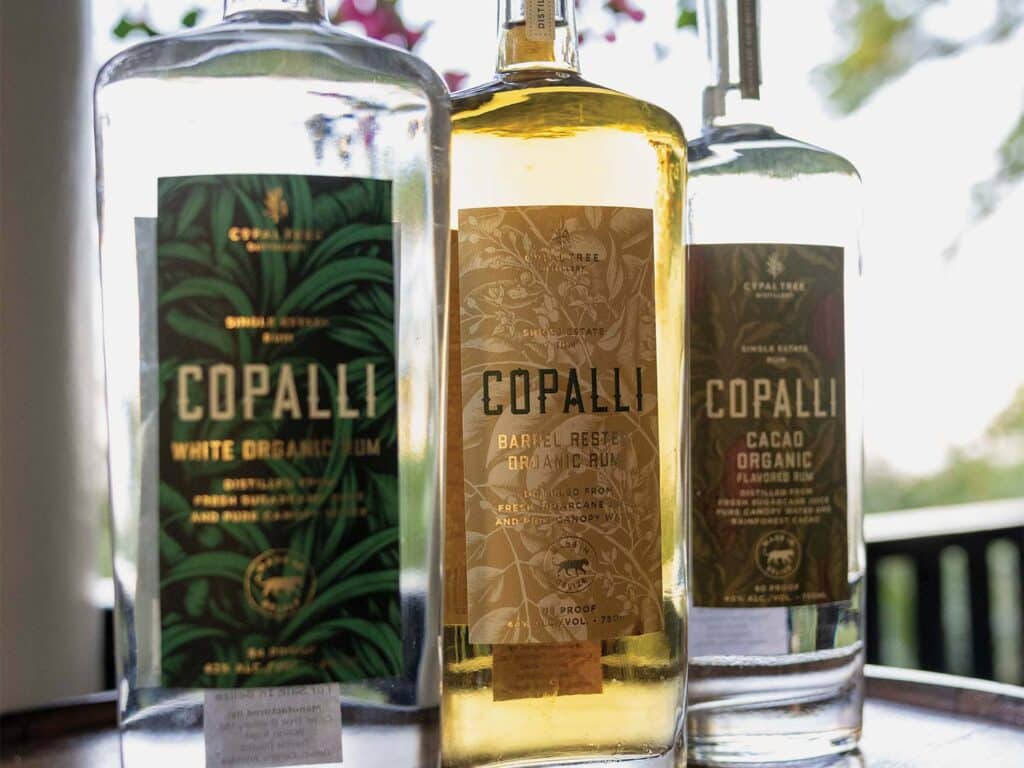
With rustic accents influenced by its own rum distillery, the lodge’s open-air design feels upscale yet casual. My suite had a lovely screened-in balcony with a rainforest view and a colorful hammock. But the best part of the space was the rain shower covered in sage, olive and sea-foam stones, with a giant window overlooking the jungle. I got to shower with a view!
Later, I enjoyed a fresh cocktail and a curry shrimp dinner at the restaurant, savoring some of the spices I had learned about earlier. That evening, I fell asleep to the sounds of palm fronds gently reaching for each other and woke up ready to head north to Ambergris Caye.
San Pedro
I’ve always loved flying into San Pedro on Ambergris Caye. Although it’s a cramped experience, the view from those puddle jumper planes is unmatched. It’s also a great way to see the lengthy stretch of the Meso-American Reef that parallels the island.
San Pedro is a popular party town, sport-fishing epicenter and diving destination. Just in the past decade, the town has grown exponentially with new development. Once a low-key retreat, San Pedro’s bustling streets are now lined with golf carts and busy restaurants, bars and shops.
I arrived at Grand Caribe—a large resort with cascading swimming pools and a carefully combed beach—and was promptly handed a complimentary rum punch to settle into the island vibe. Home of the Deep Sea Classic Fishing Tournament, Grand Caribe works with Belize’s best bluewater guides. They set me up for a day of offshore fishing with Capt. Mike Hancock, the captain who won the tournament in 2023. I’d heard good things about the sailfish bite the week before my arrival but was warned that our fishing plans might change in the morning due to weather.
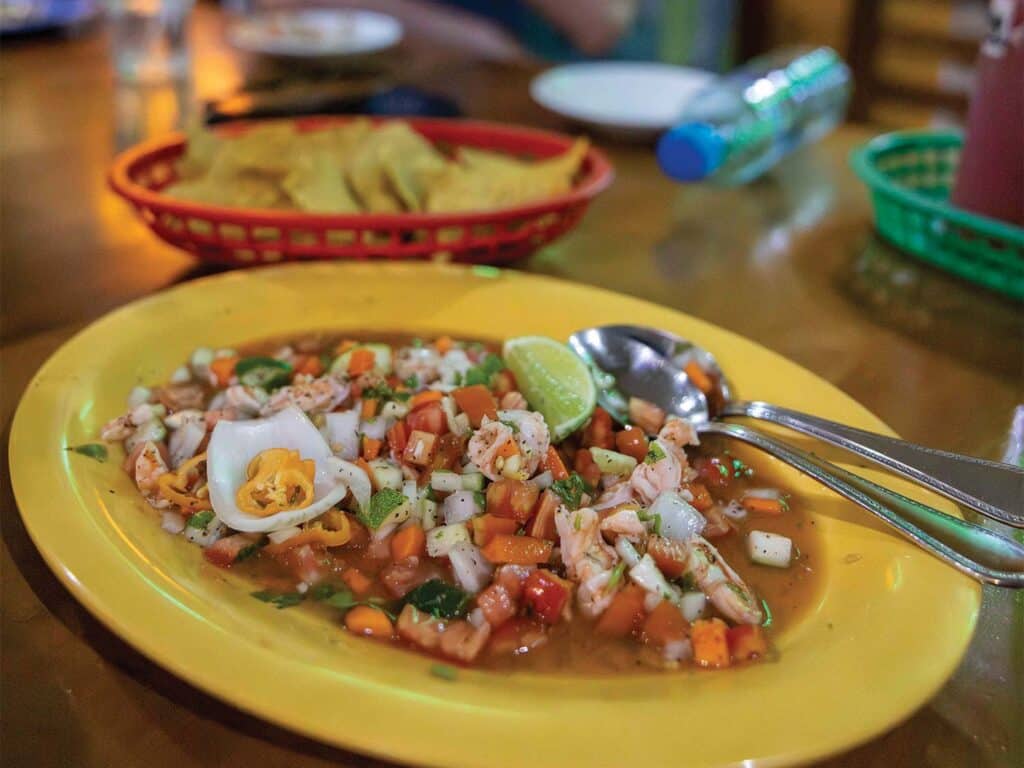
That night, I joined Belize Food Tours, which offers lunch and dinner tastings at various restaurants in San Pedro. It’s a great way to experience local spots that travelers might otherwise miss, and the food did not disappoint. Our group of ten popped into a lineup of restaurants serving up tacos, rice and beans, ceviche, fry jacks, empanadas and pupusas, a traditional Salvadorean dish. San Pedro’s restaurants mirror the cultural melting pot within Belize, and the bites we ate were yet another reminder of the country’s diversity.
The next morning, I met Hancock and angler Chevon Morrison at the dock. Hancock broke the news that we’d instead be snapper fishing on the lagoon side of the island since heading offshore wasn’t an option due to the weather. Fortunately, if your first choice of target species in Belize isn’t in the cards, there are many others available.

Hancock and Morrison spent the morning hooking lane and mangrove snapper using live sardines that Hancock cast-netted in the shallows. The bites were consistent as we hopped from one artificial reef to another. Once we had enough fish to feed the three of us, Hancock took us to an idyllic, shallow cove where groups of bonefish casually cruised along the sandy shoreline and electric-blue needlefish darted across the surface.
After anchoring up, Hancock prepared my favorite meal of the trip. First on the gunwale and then on one of the grills at the beach, he fixed a curry snapper with potatoes and rice and beans. While sitting beachside and listening to Hancock share the nail-biting details of the billfish tournament the year before, Morrison and I each washed the excellent meal down with a cold Belikin beer.
That day on the water was the perfect way to end my stay in Belize, a country that offers adventure in the same hour it instills rest and rejuvenation. I left the Caribbean jewel revived and ready to plan my next trip back. The hard part will be deciding where to go first.
Billfish in Belize
- Ambergris Caye, Belize City and Placencia are some of the best locations to book trips to fish for billfish in Belize.
- May, June, July and August typically result in the best sailfish and blue marlin bites throughout the year, although it’s still possible to raise fish in the spring and fall.
- Charter operations cover the spectrum, with some using bay boats to fish for billfish and others offering trips aboard sport-fishers.
- Belizeans often fish in tournaments in other countries, such as Mexico and Honduras, but also compete at home in the Grand Caribe Deep Sea Classic and the Belikin Blue Water Classic.
